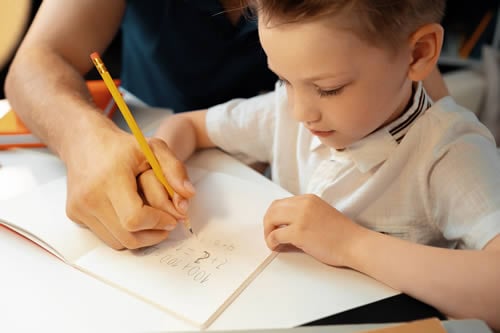Dyspraxia – also known as developmental coordination disorder – is a condition where a person finds it difficult to make their body perform simple, everyday tasks. It can affect any activity, from kicking a football, riding a bike or even walking in a straight line, to more ‘fiddly’ tasks such as using scissors or doing up shoelaces.
Although in years gone by, children with dyspraxia may have been labelled ‘clumsy’ or ‘lazy’, these days, we understand that it is a neurological disorder that often goes hand-in-hand with other difficulties such as autism or ADHD. Surprisingly, it’s very common for people with dyslexia to be dyspraxic as well.
Signs of Dyspraxia

It can be difficult to diagnose dyspraxia in very young children, says Denise Jemil, a paediatric occupational therapist from Kent and the mum of a young man with autism, as lots of kids take a while to master muscle control. Because of this, healthcare professionals usually wait till a child is around seven years old before providing a ‘label’.
“But if your son or daughter has dyspraxia, as they get older, you might start to notice that they can’t use a knife and fork, for example, or they can’t catch a ball. Struggling with handwriting is another big clue,” she explains. “Children may start to avoid these activities because they’re difficult so they fall further behind in their milestones. Another sign is poor organisational skills. Their bedroom might be cluttered or maybe they’re always forgetting to take their packed lunch or their books to school.”
Assess Individual Needs

The good news, Denise says, is that the majority of children with dyspraxia can be helped. It’s useful, she points out, to have a child formally assessed by an occupational therapist who will be able to provide a detailed analysis of:
- What the young person’s challenges are
- How they impact their life
They can then provide strategies to improve their physical skills and coordination.
At home, parents can definitely help improve a youngster’s coordination by encouraging general, physical play, she says. “Get your child involved in sports, take them to the playground, take them swimming, involve them in messy play without expectation of any outcome or being ‘good’ at something,” she advises.
“It also doesn’t hurt to help them a little bit where you can. If, for example, they find it tricky to do up buttons, you could do up four out of five and get them to do the last one. Don’t rush them and give them lots of praise when they’ve achieved it.”
Focus on One or Two Aspects

Denise recommends parents focus on helping their child to improve in one or two areas at a time. “If, say, handwriting is a problem, break it down into different aspects,” she prompts. “They might need to build up the muscle strength in their hand or practise gripping the pencil in the right way. They might need sensory work on their fingers or massage to improve circulation.”
Describing the various components of their difficulties to the children themselves, she adds, helps them to understand why they struggle and feel empowered to improve. “If they’re not aware of their differences, it can lead to frustration, low self-esteem and behavioural difficulties,” she says.
At the same time, Denise cautions, it’s important for mums and dads to be realistic and to recognise that in some cases, certain activities might always be hard for their children. There can be ways around this such as adapted cutlery or Velcro shoes, and an adult with dyspraxia may be able to drive an automatic car. It’s also useful to note that additional diagnoses may impact a youngster’s ability to make progress – ADHD, for example, could mean that a child may only be able to focus on therapeutic exercises for short periods.
In addition, finding support groups – online or in real life – can be invaluable in helping families to cope with their child’s challenges by sharing information and useful tips with other parents.
There is Always Hope
Denise says it’s important to stay positive about what your dyspraxic child can achieve. “I worked with one young lad who came from a family of cricket lovers,” she explains. “He also loved cricket but because of his dyspraxia, he couldn’t catch a ball. Three years later, I bumped into him and discovered that, not only could he catch a ball, he was now a player on the local cricket team. It was a fantastic result!”




